Ya chang features | ya chang think-tank peak BBS series of activities of the third China (international) of jade carving art teaching seminars
Release time:2023.05.12 09:07:27
The sponsors of jade courses in top universities in China gathered together to discuss jade education, craft and culture, and analyze the current situation and development trend of jade education in China. On April 27, 2023, the third China (International) College Jade Carving Art Teaching Seminar of Artron Think Tank Summit Forum series was held in Artron Art Center.

The third China (International) Academy Jade Carving Art Teaching Seminar covers the support of experts from several national museums, research institutes and top art universities, warm speeches on the spot, and active online and offline interactive questions and answers from the audience. This forum provides suggestions for the development of the industry, but also speaks for Chinese culture.
This forum invited Guo Ying, dean, professor and doctoral supervisor of Jewelry School of China University of Geosciences (Beijing), as the special host. The forum was divided into three sessions: the opening guest speech session, the round-table forum, and the interactive Q&A session between the guests and the Tibetan friends on site.

Guo Ying, dean, Professor and doctoral supervisor of Jewelry College of China University of Geosciences (Beijing) presided over the forum
Wang Nai, vice dean and graduate tutor of Jewelry College of China University of Geosciences (Beijing), Director of Jewelry Culture, Creativity and Design Center of China University of Geosciences (Beijing) : This teaching activity is jointly held by China University of Geosciences (Beijing) and Artron Art Network, and is jointly participated by Central Academy of Fine Arts, Beijing Institute of Fashion Technology and other colleges and universities. On behalf of the Jewelry Institute, I would like to extend our heartfelt welcome to all the experts and guests.
The talent training mode of Jewelry School of China University of GeoSciences mainly has two points. First, to cultivate jewelry talents with high technology, high skill and high quality. Secondly, non-art majors should explore and cultivate applied talents who attach equal importance to art technology and scientific research. These two teaching ideas have made certain achievements in the talent training mode of Jewelry College of China University of GeoSciences.
In the process of teaching practice, teachers based on the tradition, but also break through the tradition, with modern teaching ideas to achieve jade carving, jade courses in the jewelry talent training process of the supplementary role.

Wang Nai, Vice dean of Jewelry School, China University of Geosciences (Beijing), graduate tutor, Director of Jewelry Cultural and Creative Design Center, China University of Geosciences (Beijing)
Zhang Wei, professor and doctoral supervisor of CENTRAL Academy of Fine Arts, Director of Sculpture Department of Central Academy of Fine Arts: We used to have two routes in jade carving teaching. I still have some doubts about these two routes, which is how he should go.
There are two lines of the craftsman system. Then in the teaching inheritance, whether it is a universal education method or a teacher-apprentice inheritance method, there will be many problems in the middle.
The Sculpture Department of the Central Academy of Fine Arts implemented its teaching direction and teaching program in 2017. At that time, it was also a study of its importance and inevitability as the quintessence of Chinese culture.
For our understanding of tradition and contemporary, these two lines must look up to each other. In addition, a large number of works using jade, not using jade language, not using jade carving language, is actually a waste of material. The difference here is language. Read jade and feel the language characteristics of traditional jade. The works we make today should first fit this language. In teaching, we need to cherish this material and put it out into the world, and it is also our cognition and our language into the world, not our products into the world.

Zhang Wei, professor and doctoral supervisor of Central Academy of Fine Arts, Director of Sculpture Department of Central Academy of Fine Arts
Gao Wei, Vice President of School of Costume Art and Engineering, Beijing Institute of Technology: Jade carving art is an important part of Chinese traditional culture, which has deep historical and cultural heritage and unique artistic charm. With the development of The Times and social progress, jade carving art is also in constant innovation and development. As an important traditional culture, colleges and universities have the responsibility and obligation to pass it on.
We put the cultivation of students' innovative ability and practical ability in the first place, through practice let the students in-depth understanding of jade carving art, cultivate students' observation, imagination and expression ability, at the same time, teaching also pay attention to the students' basic skills and the application of new technology training, to ensure that students can master the basic skills of understanding the combination of modern technology, promote the development of history in the new era. We adopt a variety of teaching methods, including theoretical teaching, practical teaching, school-enterprise cooperation and students' autonomous learning.
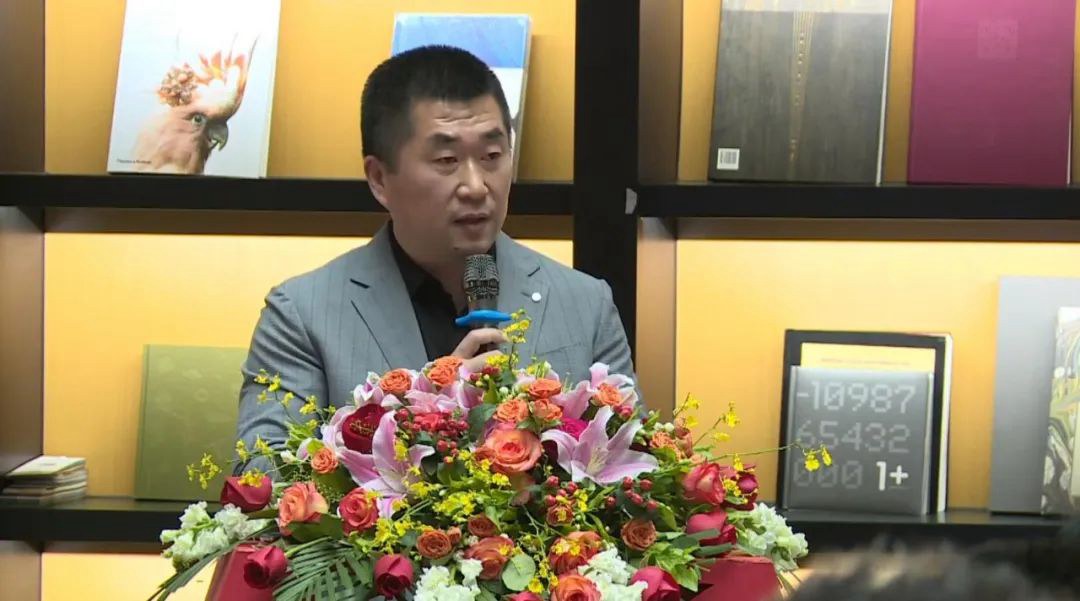
Gao Wei, deputy dean of the School of Costume Art and Engineering, Beijing Institute of Fashion Technology
Jinshan: Dear guests and friends, Hello everyone. As the initiator of the jade carving project and the donor of the jade carving course, I am very glad to welcome the third Jade Carving Art University Forum.
Jade carving art has always been an important part of traditional culture of our country, we hope that the contemporary strength and aesthetic of academicians will integrate into jade carving art faster and deeper, which is an important issue of art cause. We take donation of jade raw materials as a starting point to support and help colleges and artists to better study and practice jade carving art.
At the same time, I sincerely thank the department leaders and professional tutors of China University of Geosciences, Central Academy of Fine Arts, Beijing Institute of Fashion Technology and Sichuan Academy of Fine Arts, thank the jade carving master Mr. Guo Shilin, thank Guo Yingwei, Wang Xiaohui, Wang Wenjun, LAN Junhui, Wang Xuelei and other external tutors, thank CCTV Headquarters for the continuous tracking record, thank Archang Art Network, Thanks to my colleagues.
Finally, I would like to thank the initiator of this project, Mr. Wang Shuji, who died of illness last year, but we will not forget all his efforts for this project, and we will continue to work hard in the jade carving industry.
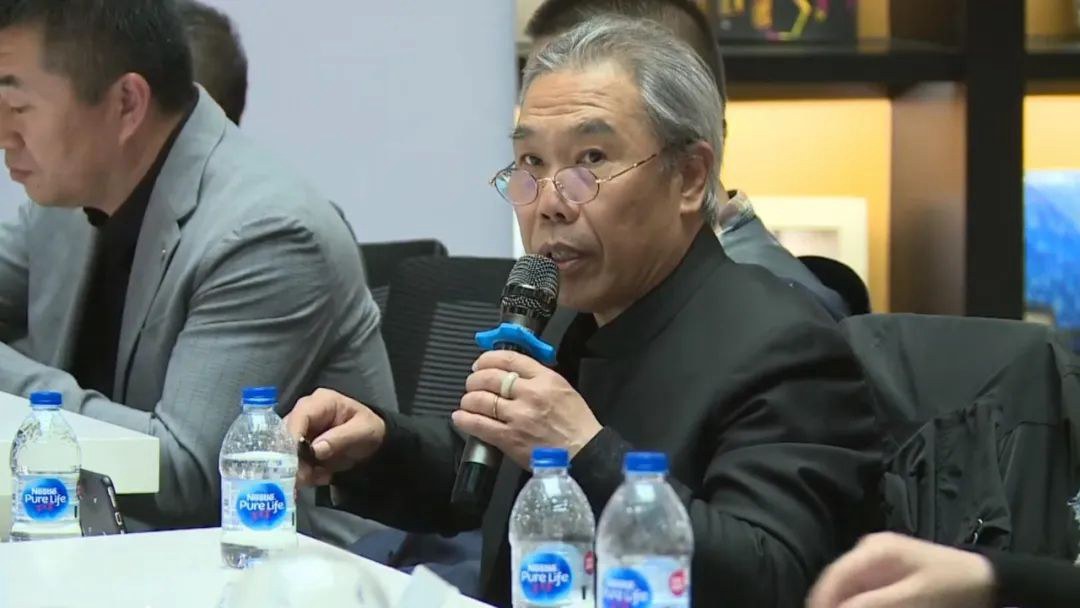
Wang Shaojun, professor and doctoral supervisor of the Central Academy of Fine Arts, former Deputy Secretary of the Party Committee of the Central Academy of Fine Arts
Guo Shilin, the THIRD Master of Chinese Arts and Crafts, the first person of Chinese Jade Carving Dragon and the chief creator of "86 National Treasure Project" : I am glad to see that so many young jade carving creators have contributed to the development of jade carving. Here I want to review and share my story with Jade carving.
I went to arts and crafts school for three years half a century ago and started carving jade in 1962. I was very surprised to find that many higher education institutions in China University of GeoSciences are studying jade carving, hoping to jointly improve the development of jade carving through the art of these higher education institutions.
At that time, we all learned from the old Fu in the jade shop, which was more traditional. Later, I felt not satisfied, because from the school to learn something, I put the red building, Water margin, the four great classics of the Three countries carved out. Later, we began to make things such as Lyu Bu, Diao Chan, and Bao lotus lamp. After the introduction of Buddhist themes into arts and crafts, many people began to make Buddhist jade wares. Now, I still make more traditional things.
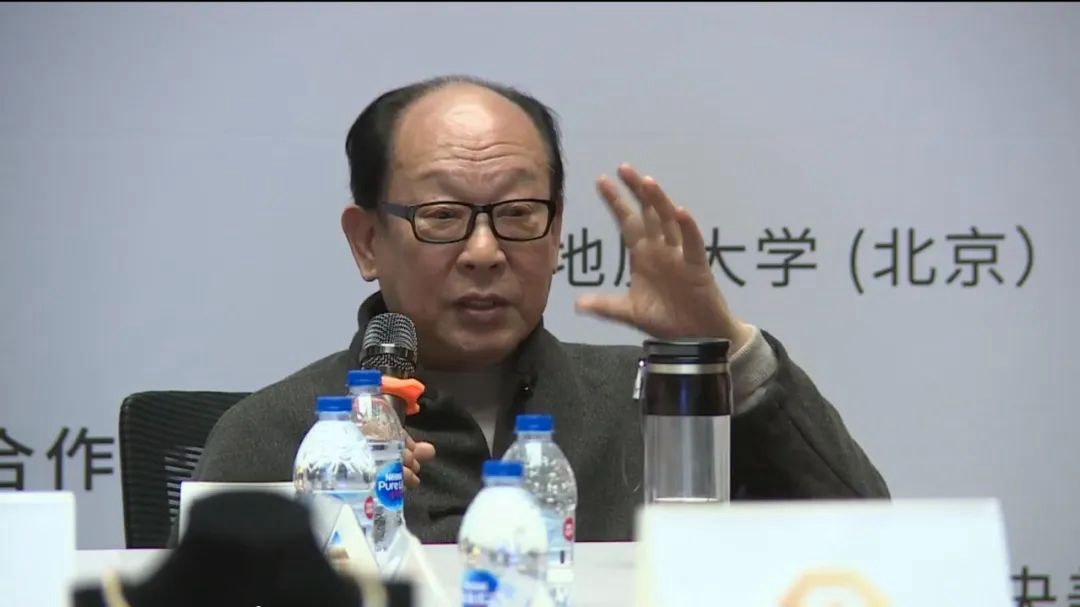
Guo Shilin, the third master of Chinese arts and Crafts, the first person of Chinese jade Dragon carving, and the chief creator of "86 National Treasure Project"
Master Supervisor of Central Academy of Fine Arts; Qu Feng, deputy director and research librarian of the Cultural Protection Science and Technology Department of the Palace Museum: My work is more about understanding jade culture. The relationship between jade culture and Chinese culture has two points: first, it represents the root of Chinese culture; second, it is the main symbol of Chinese cultural spirituality. Jade from the beginning, it does not exist as an aesthetic, it is the medium used by people to communicate between heaven and earth. This contains the universe view, world view. Then jade and funeral culture, such as a large number of buried jade, which contains the concept of human life. After that, jade is used as a metaphor for virtue, which reflects the spiritual view.
In the past, jade was not only used as a sacrifier, a living device, but also a user and a decorator. It was closely related to our life. Today, with the development of contemporary society, under the impact of modern ideas, we face this part of the heritage, in the face of our cultural roots, how do we inherit? This is a very important topic at the moment. How to transform it into the current culture to continue to develop is the responsibility of all of us. I call on all of you to do your part to think about such a root culture, so that it will continue to thrive and develop in the roots of our lives.

Master Supervisor of Central Academy of Fine Arts; Qu Feng, deputy director and research librarian of the Cultural Protection Science and Technology Department of the Palace Museum
Zhang Zaozao, Associate Professor, School of Jewelry, China University of Geosciences (Beijing) : Jade art is not only related to tradition, but also a special material that every Chinese likes very much today. In the art education system of our college, we have also tried to teach Jade for more than 10 years. My biggest experience about jade is that it is not only related to culture, but also close to water, nature and heaven and earth. In the era of information fragmentation, we rarely can deeply focus on one thing. Grinding jade is actually a process of deep concentration of the brain. In this process, our mind is relaxed and our spirit is sublimated. This intimate contact between individuals and nature is more precious especially in today's society. In a few days of course, students can not learn any skillfully and deeply, but they can get a lot of inspiration from it, so as to think about the relationship between tradition and contemporary, the relationship between technology and art, the relationship between material and creation and so on. I also have a deep love for this art. For this conference, I made a video with my students to show you some teaching practices from basic inheritance to contemporary creation in recent years from different perspectives.
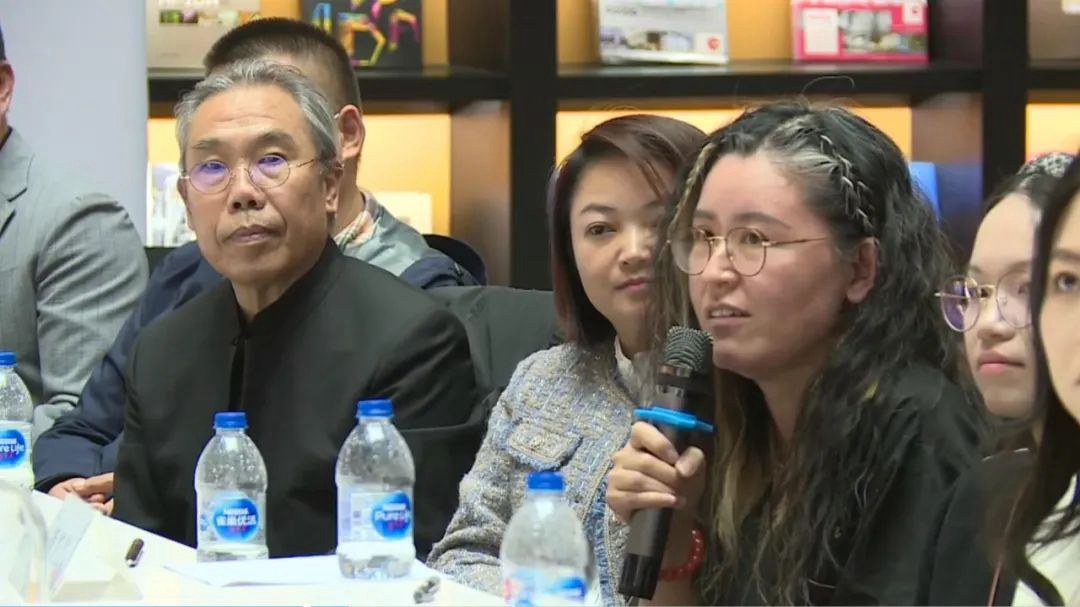
Associate Professor Zhang Zaozao, School of Jewelry, China University of Geosciences (Beijing)
Bai Feng, associate professor of Jewelry College of China University of Geosciences (Beijing), postgraduate tutor, Director of Jewelry Identification Center of Beijing Zhongdi University: I study gemstones, so I took over the course of jade carving and jade ware after graduating from the material field. I have a lot of inspiration in the teaching process of more than 20 years. What I want to share with you today is mainly the significance of jade carving material to jade carving creation.
Jade carving materials are diverse, we use Hetian jade as the main, in the inheritance of Chinese traditional culture, it is the main carrier.
From the current national standards, jade jade refers to the production of beautiful, durable, rare and technological value, can be processed into jewelry foam aggregate, a few for the amorphous body.
For example, the four famous jade in China have a long history of application in jade carving materials. In addition to these jade, there are also some amorphous gemstones, such as amber, beeswax, coral, obsidian, etc.
There are many other jade materials on the market, such as agate, chalcedony, malachite and so on. I would like to share with you that these jades are relatively large in hardness. When we carve, we call them carving and carving. When making jade, tools are needed to drive energy for carving and polishing.
Carving stone this kind of material in the present jade carving is also very much, such as Shoushan stone, Tianhuang, chicken blood stone and so on, their hardness is relatively small, when carving, we call it carving, because you can directly use the knife, so we call it carving stone. These materials are the main materials of our jade carving, and later also expanded into single crystal gem materials, including crystal, tourmaline, etc., they can also be used as some crafts or works of art in addition to jewelry.
The second thing I want to share with you is the importance of using material characteristics. The material of jade carving is also stone. There are two types of characteristics, one is its physical properties, and the other is its chemical properties. Among the physical properties, color, gloss, transparency, structure and so on, these are the characteristics we need to understand in the process of the project. In addition, its chemical properties should also be paid attention to. Each material is different, and its durability and corrosion resistance are different.
Third, jade carving art is the perfect combination of material characteristics and jade craft art. Material characteristics determine the selection of process modeling and process design, in fact, the appropriate process will reflect the aesthetic feeling of the material. Successful jade carving works are the perfect combination of materials and crafts.
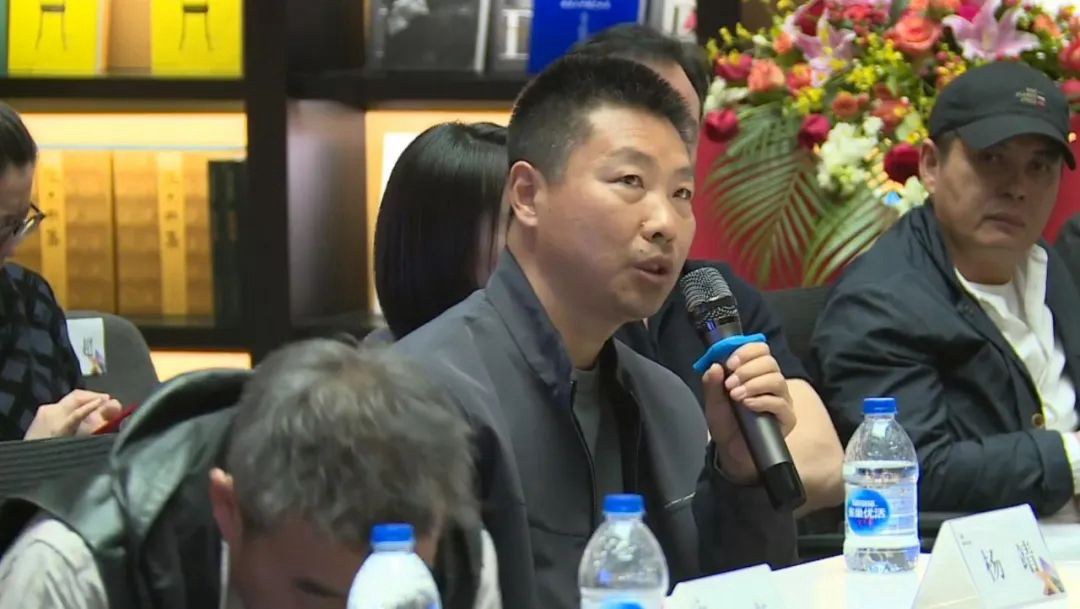
Associate Professor, College of Jewelry, China University of Geosciences (Beijing), graduate tutor, Director of Beijing Zhongdi Jewelry Identification Center Bai Feng
Professor Yang Jing, Director of the Sixth Studio of the Sculpture Department of the Central Academy of Fine Arts: As the sixth studio of the Central Academy of Fine Arts, which focuses on the study of traditional Chinese plastic arts, the study of traditional material modeling language and performance techniques is an important part of the studio teaching. The jade as a material is included in the sculpture teaching of the college, and is arranged as a compulsory course, which is not available in the teaching of art colleges in the past. The emergence of this situation is inseparable from three factors, one is inseparable from the thinking of art educators on the influence of traditional art on the development of contemporary art in the great era, the other is inseparable from the teaching ideas and assumptions of the Sixth Studio to expand the practice of traditional materials, and the third is inseparable from the encounter with Mr. Jinshan. It was his bold ideas and determination, which seemed almost ideal to us at first, and his generous donations that gave us confidence that the time, the place and the place were right.
The college is an academic camp, which creates and provides such a practical platform for the college. On the one hand, it provides us with a real position to learn from the ancient and modern traditional jade carving craftsmen, and on the other hand, it opens up the possibility of driving the development of jade carving art in our country with academic learning besides the market-driven development of jade carving industry. In addition, I think we should consider whether to establish a mechanism for the healthy development of this initiative, so as to play a positive and continuous role in promoting the participation of groups and individuals to do their best and their own beauty. That should probably be the next question we think about together.

Professor Yang Jing, director of the sixth Studio of Sculpture Department of Central Academy of Fine Arts
Xiong ', Associate professor of jewelry Design, Beijing Institute of Fashion Technology: Beijing Institute of Fashion Technology is a domestic first-class and internationally renowned Chinese fashion higher education institution, which has always walked in the forefront of fashion higher education. The jade carving course closely follows the characteristics of the school and the school motto - "Fashion leading" and "walking with the United States". We are committed to exploring the cultivation of jade fashion talents and promoting the integration and development of jade fashion culture and modern aesthetic taste. Jade carving course is a required course of jewelry design major in College of Costume Art and Engineering. In the design and creation of the course, students will not be too constrained by materials and traditional elements. They look at jade from the aesthetic of young people, and the theme is also relatively biased towards youth culture and fashion culture.
In addition to the traditional hand-carved jade, we introduced the jade CNC machine carving technology. Through the import of digital modeling, it can realize plane relief, front and back relief, round carving, hollow carving and other works, and can easily achieve mass production. Jade CNC machine carving technology can fully release the difficulty of traditional handicmanship, suitable for college students who lack long class training. It can make students have more energy into the design, enhance and enlarge the aesthetic value of the design. In addition, we encourage students to think about the characteristics and relationship between CNC carving and manual carving. The numerical control machine carving empowered by science and technology and the hand carving of traditional technology have their own advantages and limitations, which cannot be absolutely judged. Different jade modeling and materials choose appropriate processing methods, and some modeling also requires the cooperation of two processes, and the relationship between the two is closely connected to complement each other.

Beijing Institute of Fashion Technology jewelry design professional teacher associate professor Xiong Malacceny
Wang Wenjun, excellent external teacher of JADE carving course of Beijing Institute of Fashion Technology: Through my teaching of jade course, I have some feelings and suggestions. Nowadays, most of the students have limited knowledge about jade. It is suggested that in addition to learning about jade in class, students should try to find more time to go to the museum to see the object. Jade culture has a history of nearly ten thousand years in China. This course does not skip the ancient jade part. Students should first have a more comprehensive and systematic understanding and study of ancient jade. I brought some ancient jade of different periods with me when teaching. Students could come and have a look, touch and feel during the break. Only through such close contact can they have a more direct cognition and feeling of jade. In addition, there needs to be a corresponding platform to display and promote excellent works. The exhibition of works is very important. It is not only a display of teaching results, but also a display of students 'talents, but also a way to communicate with the outside world, receive feedback and find opportunities for cooperation, so as to better promote the development of jade culture and form a good cycle. Each college has an exhibition hall, and now there are also many art Spaces where jewelry activities can be cooperated.

Wang Wenjun, excellent external teacher of jade carving course of Beijing Institute of Fashion Technology
Jade stone industry expert Liu Mei: In October 2016, our company donated a batch of jade and carving equipment to the sixth Studio of the Sculpture Department of the Central Academy of Fine Arts for the first time. In the past 7 years, we have continued to donate jade raw materials to the Central Academy of Fine Arts, Beijing Institute of Fashion Technology, China University of Geosciences, Sichuan Academy of Fine Arts and other universities. At the same time, we invite traditional jade carving craftsmen to be recommended to various colleges and universities and become specially invited teachers. Assist in setting up jade carving courses.
In seven years, we have donated more than 350 kg of jade raw materials, and several universities have set up compulsory courses such as jade sculpture and carving. In terms of course setting, the Sculpture Department of Central America has 80 class hours in 4 weeks, the Jewelry School of University of Geosciences has 64 class hours in 8 days, and the jewelry design major of Beifu has 56 class hours. More than 700 college talents have been trained to contact, study and practice jade carving. We also donated the graduation design works of many students in the college, among whom about 50 or 60 people chose to engage in the jade carving industry and carry out special jade carving creation after graduation, and helped cultivate the first master's student and the first doctoral student in the jade carving direction. At the same time, we have cooperated with many college teachers and artists in jade carving art works.
Our jade carving donation is a 10-year plan, and seven years have passed since we made joint efforts. In the next three years, we still have three major tasks: continue to promote this education model in art colleges and universities, cooperate with the preparation of textbooks, promote the establishment of foundations in colleges and universities, enterprises and industries, promote educational innovation, support graduate talents, incubate brands, etc., so that the jade carving industry and academic circles can be closely linked.
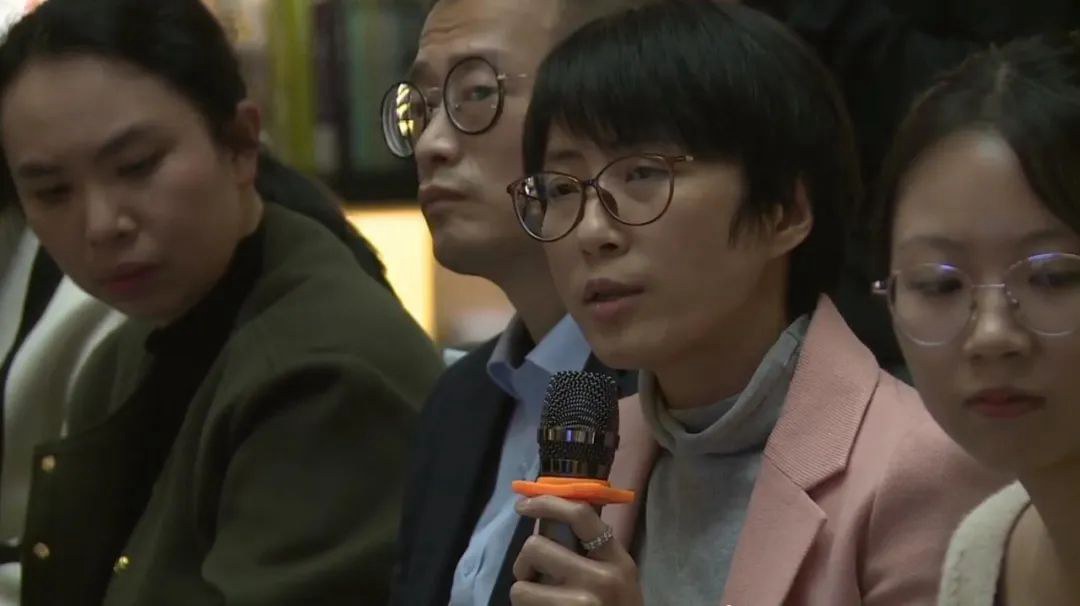
Jade stone industry expert Liu Mei
Lou Jin, director of Instrument Sculpture Studio of Sculpture Department of Plastic Arts College of Sichuan Academy of Fine Arts and tutor of master students, made an important speech through remote video: I would like to share the jade sculpture teaching carried out by the Sculpture Department of Sichuan Academy of Fine Arts since 2016, namely: Digital Art Creation -- Contemporary Jade Carving Creation Workshop.
First of all, from the perspective of cultural attitude, utensils are a general term for all kinds of utensils, which are artificially created articles with certain functions. "Zhoushu · Baodian" said: "The things of the week for the tool." Means that the craftsmen in the process of creation to make comprehensive items called tools. I want to "jade carving" jade grinding process as a kind of attitude, thus rising to the traditional material and spirit, quality and culture.
Secondly, I adhere to the tradition of Chuanmei teaching driven by creation, and adopt the teaching mode of studio "creation workshop", that is, teachers, arts and crafts masters, artists, entrepreneur designers and creators... We work together on the whole course, or the whole creative process. The course of "Jade and Stone Carving Utensils" is an innovative professional experimental course in the fourth grade of the pottery studio of the Department of Sculpture of Sichuan Academy of Fine Arts. It takes the natural attributes and social attributes of jade and stone materials and sculpture language as the media, takes the interest points of students as the core, and aims at cultivating students' basic ability to create jade sculpture utensils independently.
Third, we look for the present and future of our own construction tradition in the vertical clues of art history and the horizontal coordinate clues of contemporary art.
The teaching mode is "jade carving workshop" : learning → investigation → communication → creation → exhibition → works form a derivative cycle. Looking for possibilities in the process is the working method. The teaching contents of the creative workshop include: 1. The production concept and skill of traditional utensils sculpture; 2 Appreciation and analysis of modern and contemporary sculpture; 3. Understanding and creation of contemporary stone carving objects "study → investigation → exchange → creation → exhibition →" through these creation practices, we can learn art history by our own practice and construct art history.
In the following, I have summarized the contemporary jade works in recent years through "digital art creation" : the digital "revolution" of this era has inevitably changed the inherent shape of our material world: new technologies have taken on forms that were once impossible; Intelligent creation of aesthetic based on the concept of art has been reconstructed; New materials challenge our preconceived values; The present state of matter is constantly refreshing our eyes. The representation of "digital art creation" has become a reality. The "Digital Art Creation" series of courses, projects, exhibitions and innovation workshops of the Sculpture Department of Sichuan Academy of Fine Arts hope to emphasize these obvious changes, so that today's new technologies, materials and processes once again make the "traditional concept" of ware sculpture bear the creativity and current reality of the moment.
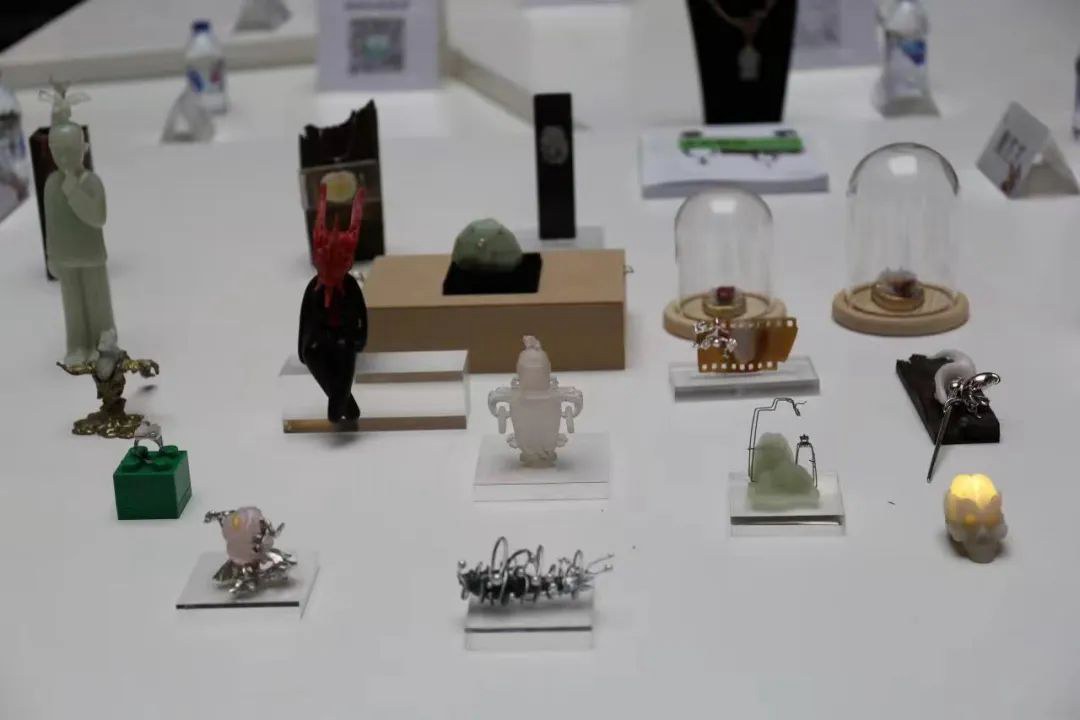
Display of Teaching Results
Qian Liang, Associate professor of Urban Design School of Central Academy of Fine Arts and member of Expert Committee of China Light Industry Jewelry Center: The topic I'm talking about today is "Jade · See Beauty Education". "Jade · See" is the name of a series of exhibitions I started to do in 2017. So far, I have done four Jade media art exhibitions. The purpose of the exhibition is also to build a bridge between traditional and modern, arts and crafts and pure arts, and between the system of craftsmen and the system of colleges. In recent years, the activities of "intangible cultural heritage" in colleges and universities have been carried out in full swing, including the manual art colleges or relevant courses set up in some colleges and universities and the activities of sketching in the countryside, which are also mainly based on investigation, research, visiting and contact with traditional handicrafts and culture. Introducing and going out should benefit the above two systems.
From a material stone to a cultural stone, it can be said that jade carving has two periods of life, one belongs to heaven and earth, long and thick; One part is attributed to culture, wisdom and personality. Jade carving teaching in the college is not only the reference and transformation of traditional jade carving style, not only for jade carving, but also for jade, from a deeper cultural level to explore the language of jade carving, and connected to the contemporary cultural consciousness. Through the teaching of jade carving art, ponder the will and character of teachers and students, and explore the idea of "wise" should be the image form, the unity of nature and man and the idea of "clever" to see heaven and earth between the square inch, leaving more than enough clever to return nature. Jade and Jade meet each other because of jade, compared to jade, to the United States, moral education.
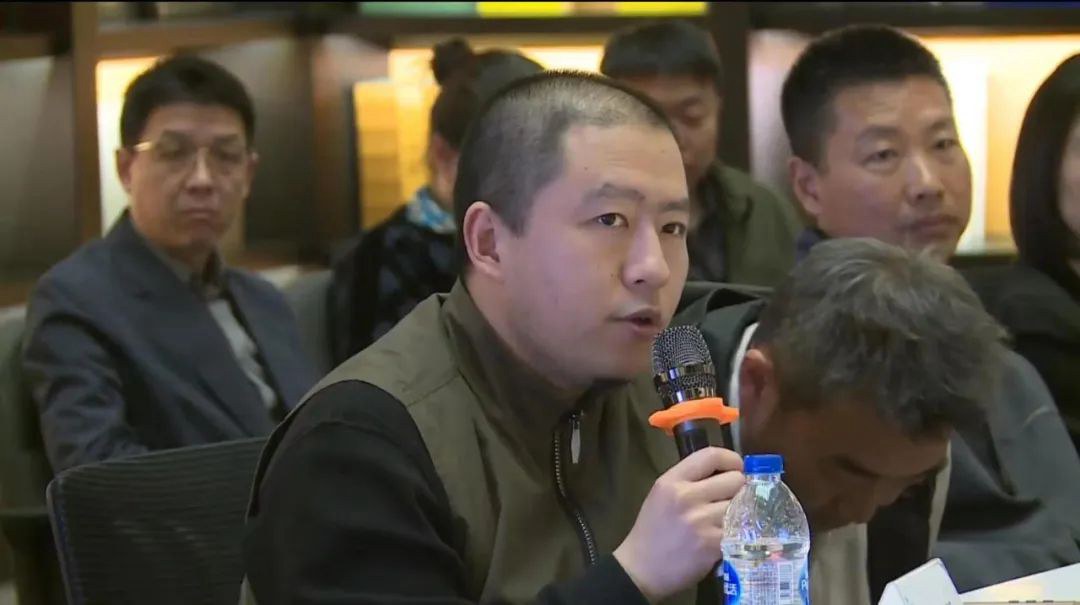
Qian Liang, associate professor of Urban Design School of Central Academy of Fine Arts, member of Expert Committee of China Light Industry Jewelry Center
Guo Yingwei, general manager of Beijing Bolongge Cultural Development Co., LTD., also participated in the roundtable forum. Wang Xiaohui, a teacher of jade carving course in Sculpture Department of Central Academy of Fine Arts and a young jade carving artist of China; Beijing Institute of Fashion Technology jewelry design department deputy director Han Xinran.
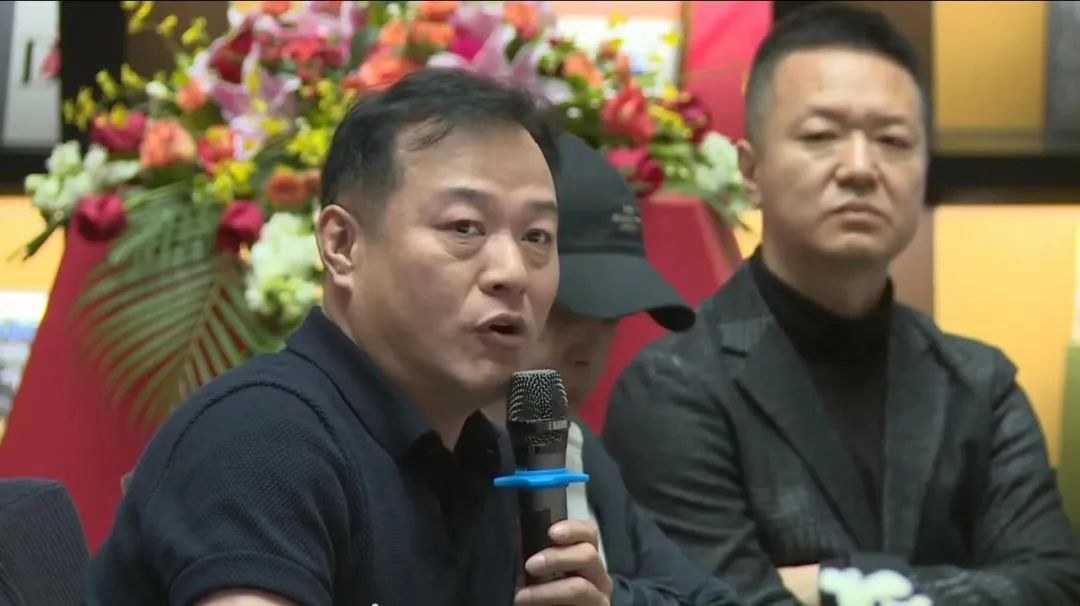
Beijing Bolongge Culture Development Co., LTD. General Manager Guo Yingwei
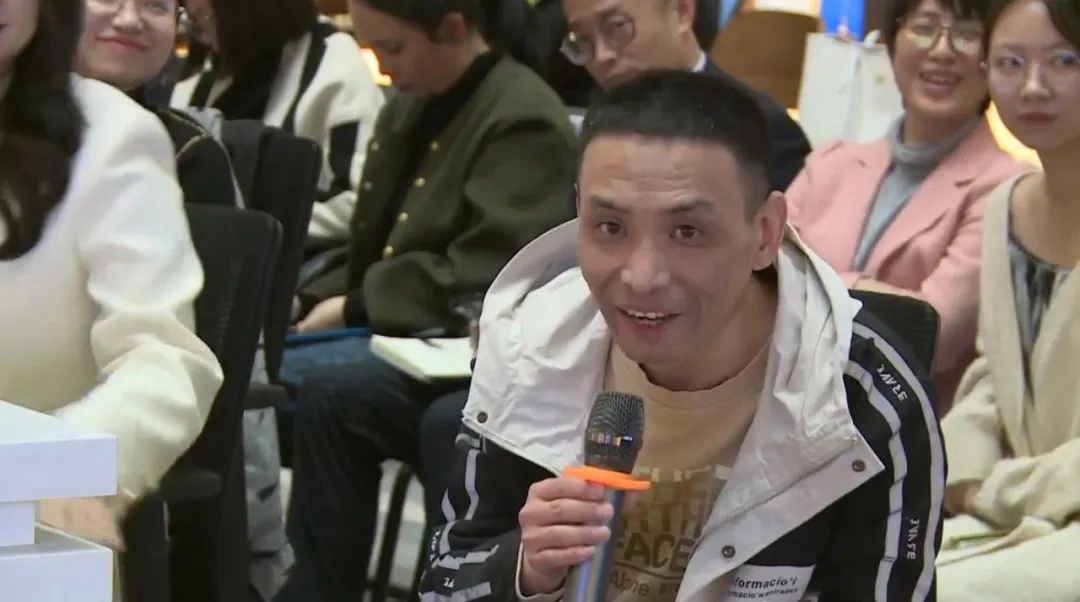
Wang Xiaohui, teacher of jade carving class of Sculpture Department of Central Academy of Fine Arts, is a young jade carving artist of China
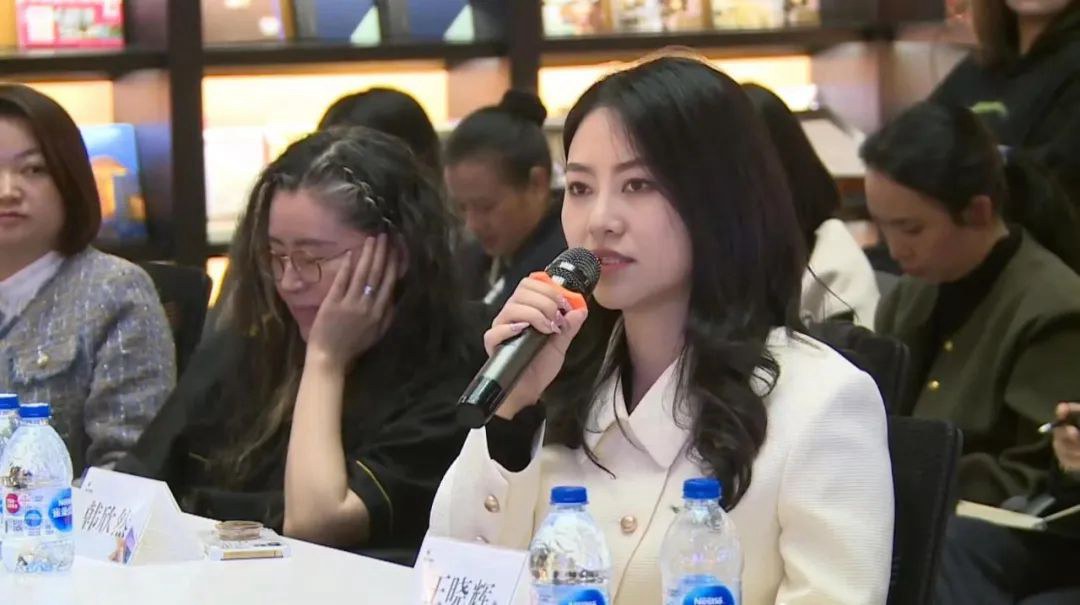
Beijing Institute of Fashion Technology jewelry design department deputy director Han Xinran
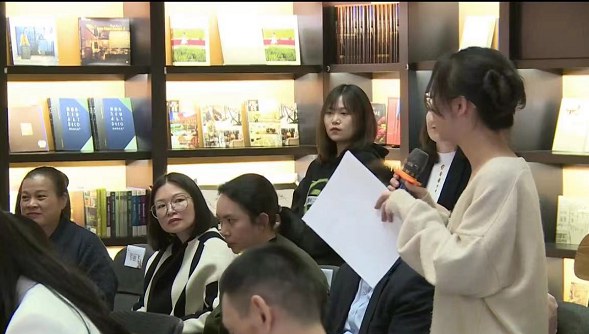
Questions from the audience
Guo Ying, Dean, Professor and doctoral supervisor of Jewelry School of China University of Geosciences (Beijing); Guo Shilin, the third Master of Chinese arts and Crafts, the first person of Chinese jade Dragon carving, and the chief creator of "86 National Treasure Project"; Jiang Zijun, CTO of ArtronCulture Group and General manager of Artron.net; Wang Nai, Vice dean of Jewelry School, China University of Geosciences (Beijing), graduate tutor, Director of Jewelry Cultural and Creative Design Center, China University of Geosciences (Beijing); Wang Shaojun, professor and doctoral supervisor of Central Academy of Fine Arts, former Deputy Secretary of Party Committee of Central Academy of Fine Arts; Zhang Wei, professor and doctoral supervisor of Central Academy of Fine Arts, Director of Sculpture Department of Central Academy of Fine Arts; Master Supervisor of Central Academy of Fine Arts; Qu Feng, deputy director and research librarian of the Cultural Protection Science and Technology Department of the Palace Museum; Gao Wei, Vice dean of School of Fashion Art and Engineering, Beijing Institute of Fashion Technology; Wu Yongping, Director of National Center, Central Academy of Fine Arts; Jinshan, Chairman of Beijing Fuyihe Trading Co., LTD., Jade carving project initiator/donation entrepreneur; Guo Yingwei, General manager of Beijing Bolongge Cultural Development Co., LTD.; Bai Feng, Associate professor, graduate tutor, Jewelry School, China University of Geosciences (Beijing), Director of Beijing Zhongdi University Jewelry Identification Center; Zhang Zaozao, Associate Professor, School of Jewelry, China University of Geosciences (Beijing); Professor Yang Jing, Director of the Sixth Studio of the Sculpture Department of the Central Academy of Fine Arts; Qian Liang, Associate professor, School of Urban Design, Central Academy of Fine Arts, Member of Expert Committee of China Light Industry Jewelry Center; Wang Xiaohui, a teacher of jade carving course in Sculpture Department of Central Academy of Fine Arts and a young jade carving artist of China; Han Xinran, deputy director of jewelry Design Department, Beijing Institute of Fashion Technology; Xiong Malachai, associate professor of jewelry Design major, Beijing Institute of Fashion Technology; Wang Wenjun, excellent external teacher of Jade carving course of Beijing Institute of Fashion Technology; Zhu E, Professor of China Academy of Art; Rosa, Cultural Communication Ambassador of Macao, China; Guan Chao, Director of Artron.net Product Center; Xu Xiaoyan, Business Operation Director of Artron.net; Ma Xiao, Director of new media Operation of Artron.net; Xu Cuiyun, President of Artron Art Research Institute; Wei Lifei, Director of Jade Carving Studio of Guilin Tourism College; He Yanxin, director of metal Art Studio of Guilin Tourism College: Deng Chaoqun, teacher of Jade Carving studio of Guilin Tourism College.